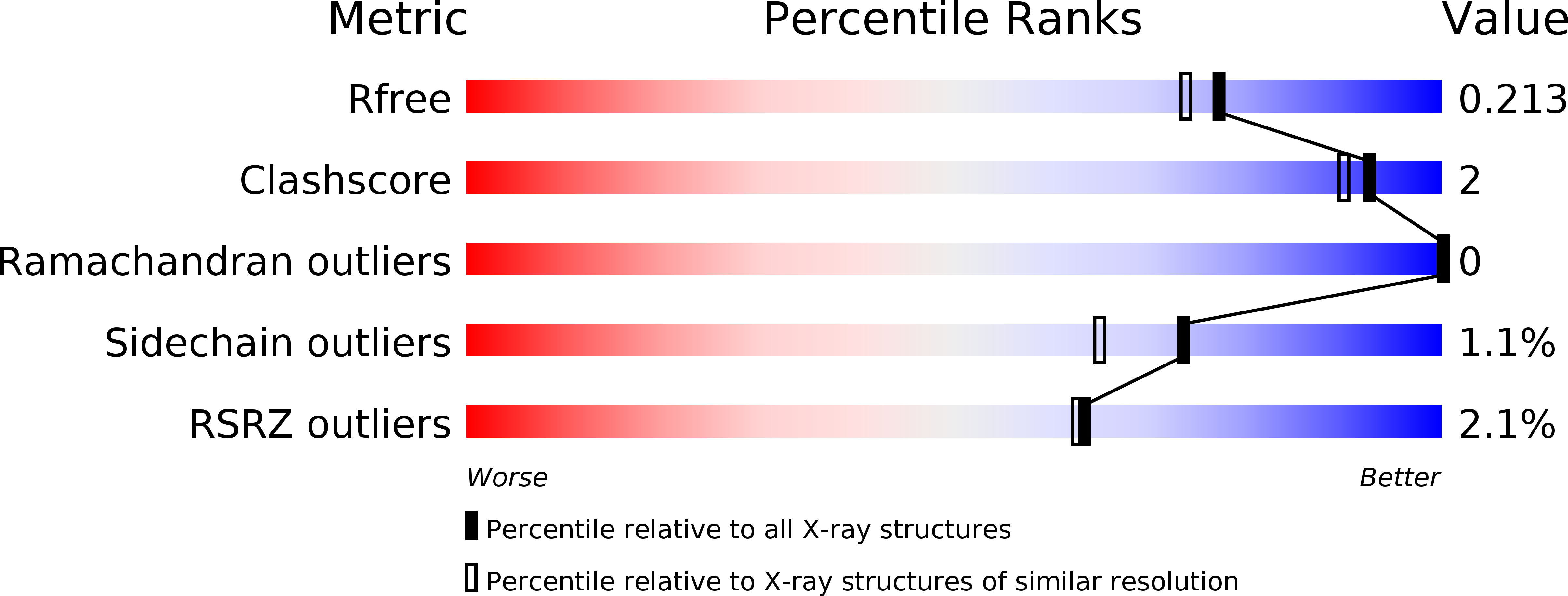The mechanism of the amidases: mutating the glutamate adjacent to the catalytic triad inactivates the enzyme due to substrate mispositioning.
Weber, B.W., Kimani, S.W., Varsani, A., Cowan, D.A., Hunter, R., Venter, G.A., Gumbart, J.C., Sewell, B.T.(2013) J Biol Chem 288: 28514-28523
- PubMed: 23946488
- DOI: https://doi.org/10.1074/jbc.M113.503284
- Primary Citation of Related Structures:
4GYL, 4GYN, 4KZF, 4LF0 - PubMed Abstract:
All known nitrilase superfamily amidase and carbamoylase structures have an additional glutamate that is hydrogen bonded to the catalytic lysine in addition to the Glu, Lys, Cys "catalytic triad." In the amidase from Geobacillus pallidus, mutating this glutamate (Glu-142) to a leucine or aspartate renders the enzyme inactive. X-ray crystal structure determination shows that the structural integrity of the enzyme is maintained despite the mutation with the catalytic cysteine (Cys-166), lysine (Lys-134), and glutamate (Glu-59) in positions similar to those of the wild-type enzyme. In the case of the E142L mutant, a chloride ion is located in the position occupied by Glu-142 O(ε1) in the wild-type enzyme and interacts with the active site lysine. In the case of the E142D mutant, this site is occupied by Asp-142 O(δ1.) In neither case is an atom located at the position of Glu-142 O(ε2) in the wild-type enzyme. The active site cysteine of the E142L mutant was found to form a Michael adduct with acrylamide, which is a substrate of the wild-type enzyme, due to an interaction that places the double bond of the acrylamide rather than the amide carbonyl carbon adjacent to the active site cysteine. Our results demonstrate that in the wild-type active site a crucial role is played by the hydrogen bond between Glu-142 O(ε2) and the substrate amino group in positioning the substrate with the correct stereoelectronic alignment to enable the nucleophilic attack on the carbonyl carbon by the catalytic cysteine.
Organizational Affiliation:
From the Structural Biology Research Unit, Division of Medical Biochemistry, Department of Clinical Laboratory Sciences and.















